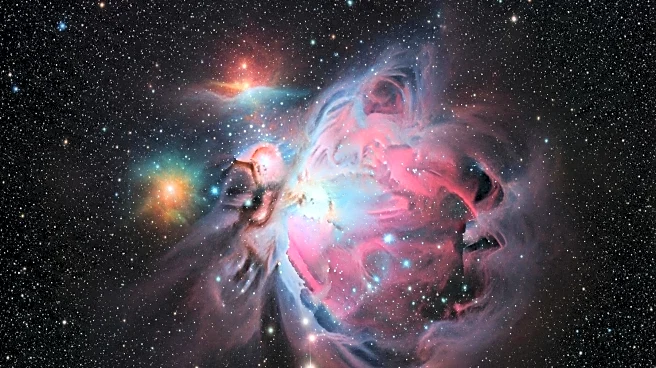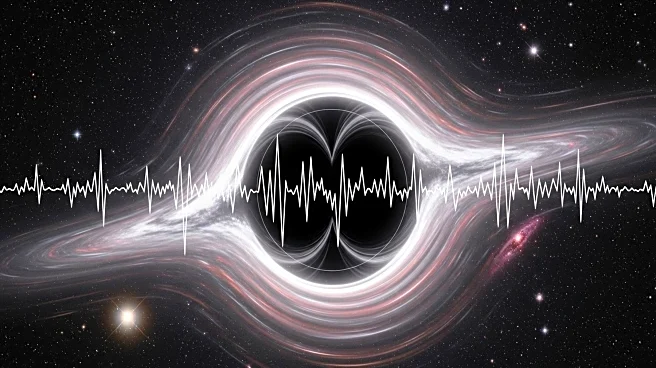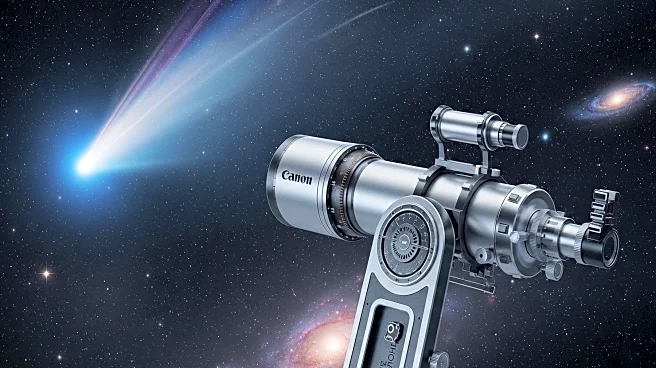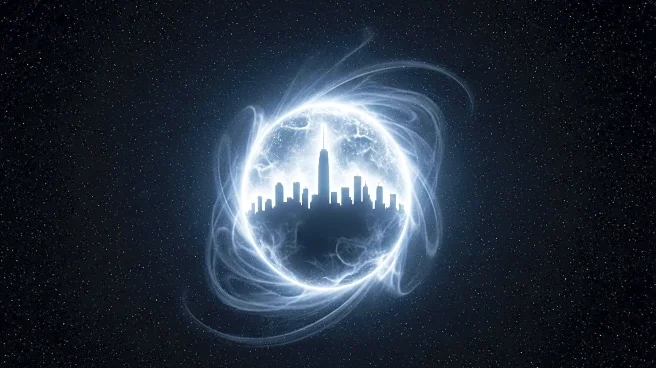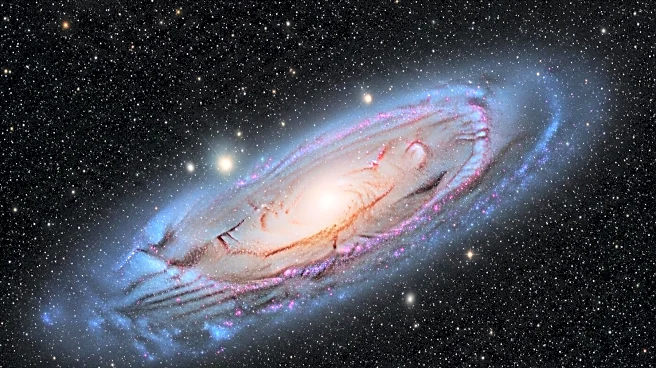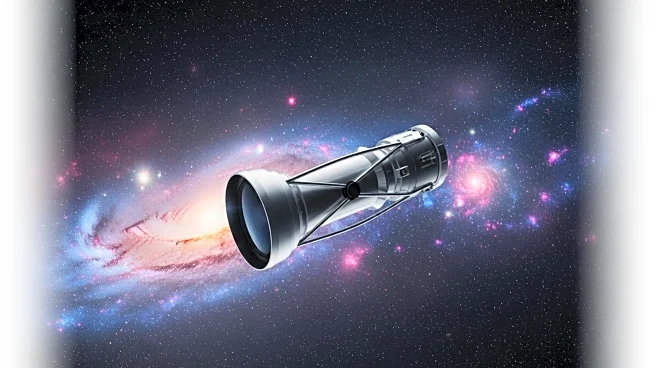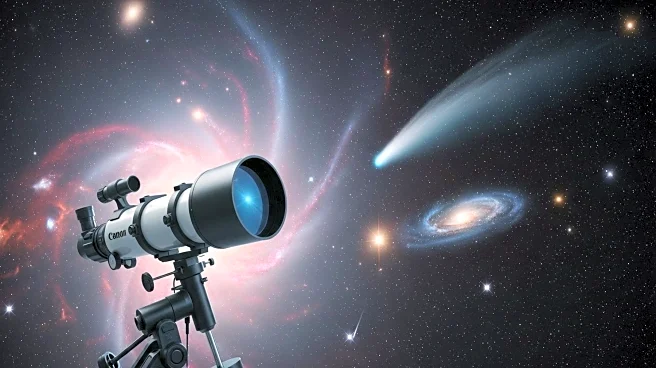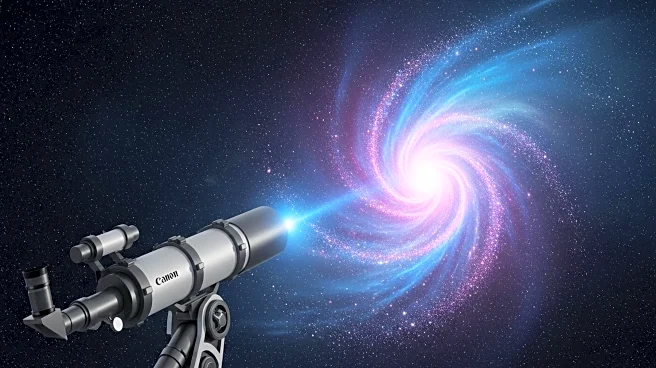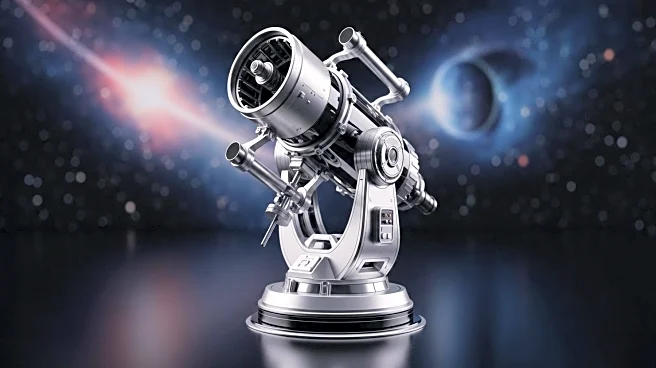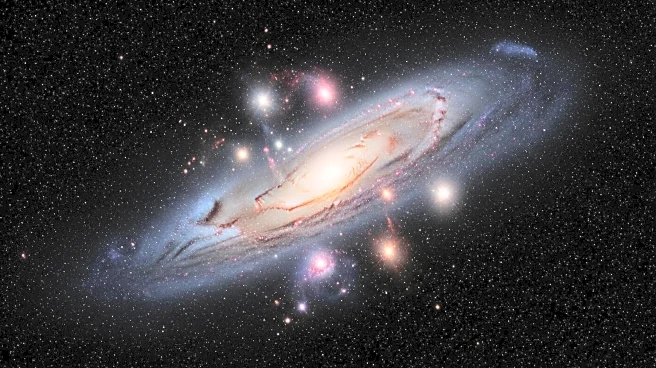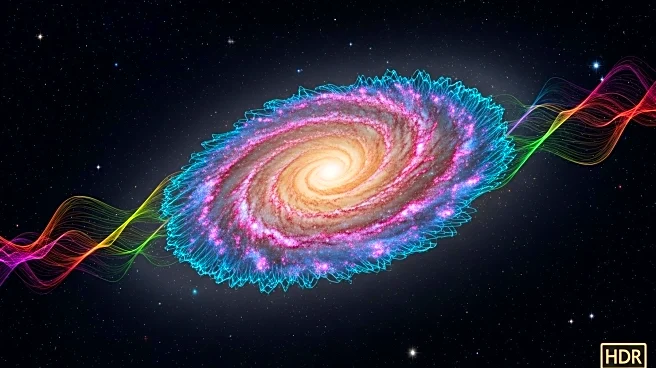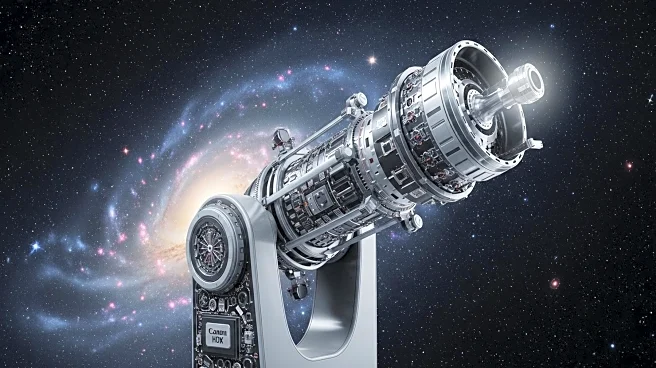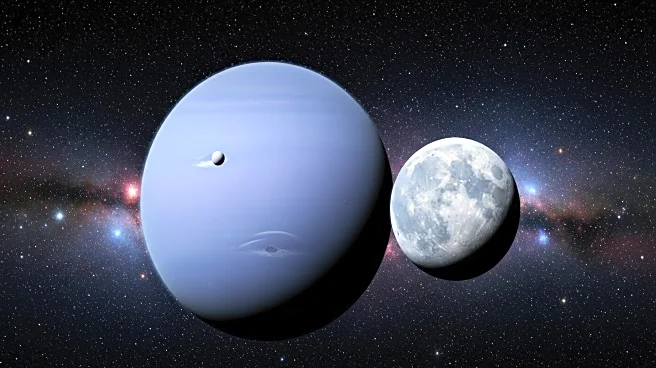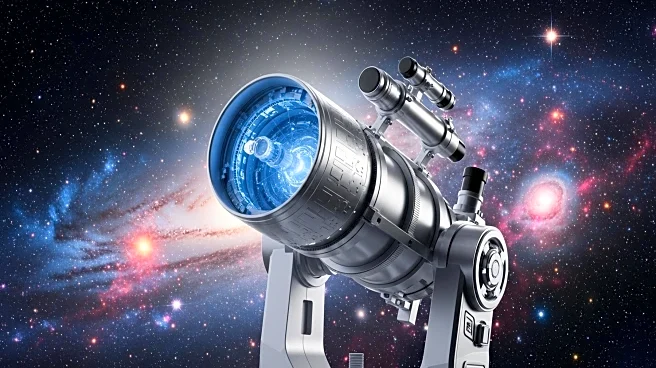What is the story about?
What's Happening?
NASA's Hubble Space Telescope has provided a new image of the spiral galaxy Messier 96, located 35 million light-years away in the constellation Leo. This galaxy is known for its asymmetric appearance, which may be due to gravitational interactions with neighboring galaxies. The latest image incorporates data from ultraviolet, near infrared, and visible/optical light, offering a detailed view of the galaxy's uneven distribution of gas and dust, asymmetric spiral arms, and off-center galactic core. Previous images released in 2015 and 2018 added layers of data, enhancing the scientific understanding of Messier 96. The new image includes light that reveals regions of ionized hydrogen and nitrogen, aiding astronomers in studying the environment within the galaxy and the conditions under which stars are forming.
Why It's Important?
The Hubble Space Telescope's observations of Messier 96 provide critical insights into star formation processes. By analyzing regions of ionized hydrogen and nitrogen, astronomers can better understand the rate of star formation and the properties of interstellar gas. This data is essential for determining whether Messier 96 is a starburst galaxy or has an active galactic nucleus. The findings contribute to broader astrophysical research, enhancing knowledge of how stars form within giant dusty gas clouds and how they influence their surroundings. Such research has implications for understanding the lifecycle of galaxies and the evolution of the universe.
What's Next?
Astronomers will continue to analyze the new data from Hubble's observations of Messier 96 to further explore star formation processes. The information gathered will be used to study how stars form within gas clouds, how dust affects starlight, and the impact of stars on their environments. This ongoing research may lead to new discoveries about the dynamics of galaxies and the mechanisms driving star formation. Future observations and data collection will likely focus on expanding the understanding of galactic interactions and their effects on star formation.
Beyond the Headlines
The study of Messier 96 through Hubble's observations highlights the importance of space telescopes in advancing astronomical research. The ability to capture high-resolution images across multiple wavelengths allows scientists to explore complex galactic phenomena. This research not only contributes to scientific knowledge but also inspires cultural and educational interest in space exploration. The findings from Hubble's observations may also influence future missions and the development of new technologies for studying the universe.
AI Generated Content
Do you find this article useful?
